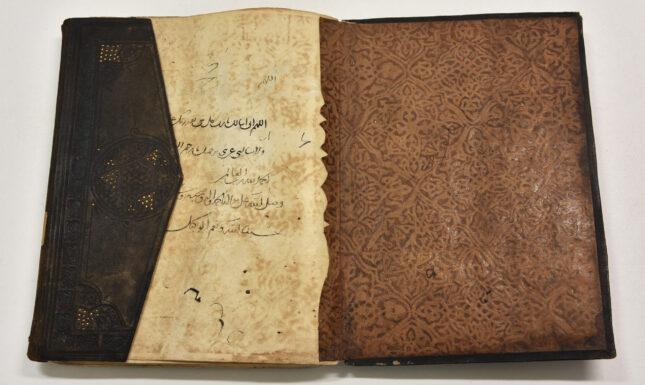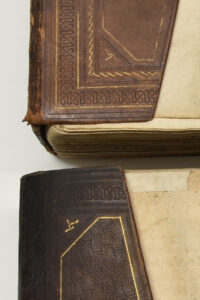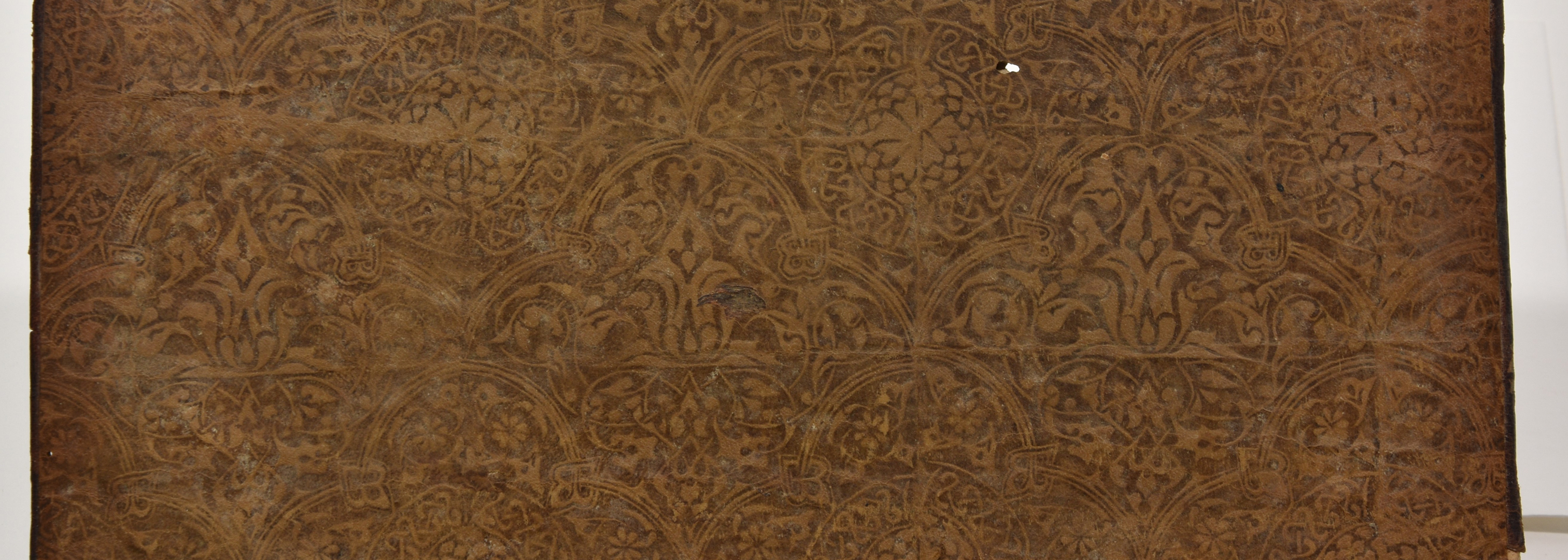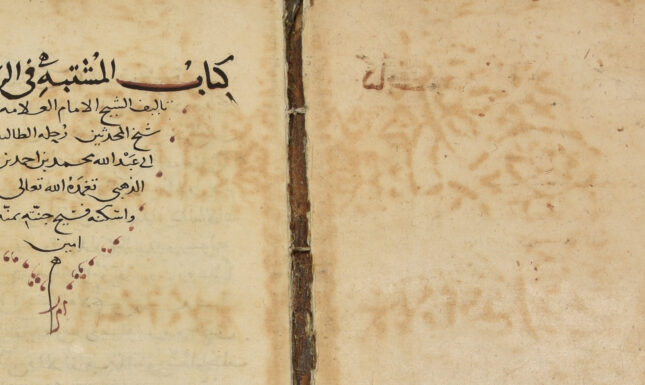Patterns of aging in Mamluk manuscripts
Stains in manuscripts can be problematic, but they can also reveal interesting historic information. So, it is important to distinguish between ‘good’ and ‘bad’ stains. Luca van der Zande studied a pattern of stains in Arabic manuscripts to learn about their nature and make conservation decisions.
As the custodian of the Middle Eastern collection, long-term preservation of the manuscripts and books is the library’s concern. Preventive measures include protective housing and climate-controlled stacks, but conservation treatment of damaged items is often needed as well. Conservation always requires a good understanding of the materials and the cultural-specific physical characteristics of a collection. The materiality of Middle-Eastern manuscripts is a field of study in full development, and students in conservation are interested in learning more about these objects. Their general training covers European books and in order to extend their scope, they need hands-on experience with actual Middle-Eastern objects. The Leiden collection provides a wonderful resource for these students.
In the UBL we facilitate this via internships in the conservation studio, or through research projects that introduce students to specific problems since opportunities for students to work with such collections under the guidance of an experienced specialist are rare. Also, sharing and exchanging knowledge is key to long-term preservation, because these students will be the next generation of conservators. One such recent research project addressed a particular form of discolouration, caused by decorated leather doublures found in manuscript bindings from the Mamluk period (1250-1517).


The Mamluk Sultanate included Egypt, Greater Syria, and the Hejaz. Many manuscripts from this period have intricately tooled leather bindings, with doublures made of silk or block-stamped leather. These block-stamped leather doublures pose several issues, beginning with questions about their production (who and how). The historic treatises on bookmaking (11th and 13th century) do not provide information; we think they may have been produced with wooden blocks, similar to the ones used for block-printed fabrics, yet we lack details about the exact procedure. Who made them is also not certain; the leather may have been decorated by a specialised craftsperson who sold the worked skins to other craftsmen like bookbinders, yet it is also possible that a bookbinder possessed a printing block and worked the skins in his workshop himself.
Eventually, these block-printed leather doublures cause discolouration in the adjacent paper, usually the outer pages of the text block. For book historical research, this phenomenon can actually be very helpful. The discolouration patterns are so distinct that it is possible to identify the former presence of such decorated leather doublures should they be lost or removed through rebinding. This evidence then may help to narrow the window of a manuscript’s period of production, especially when the volume lacks a colophon in which the copyist mentioned a date or place of creation.
From a conservation perspective, we wanted to know if the discolouration is harmful and signifies deterioration. Is it caused by a particular agent or dye used when the leather was decorated? Or was heat used when the leather was stamped, affecting the condition of the leather which then, in turn, caused accelerated ageing in the paper? These were some of the questions we had.


Luca van der Zande was the student who decided to take on this topic for a diagnostic study, as part of his MA thesis in Book and Paper Conservation, University of Amsterdam. I had identified the volumes with the leather doublures, and Luca conducted the study. First, he compared the patterns. Among the selected manuscripts, he found two otherwise unrelated manuscripts with the same pattern:
- UBL Or. 413a, Kashf Ma`ani al-Badi` fi Bayan Mushkilat al-Mani`, 886 AH/1481 CE (from the Warner collection)
- UBL Or. 54, Iẓhār ṣidq al-Mawadda, 893 AH/1488 CE (from Golius’ collection).
These manuscripts were copied only 7 years apart. A similarity in some of the small tools used to decorate the exterior of both bindings as well as the identical block-stamped pattern seems to indicate that the two volumes were bound in the same workshop. This interesting find was a by-product of the analytical study and gives some insight into the bookbinder's practice. It is noteworthy that the same patterned leather was available for both items since the volumes were probably bound a considerable time apart from each other. It suggests that numerous sheets of leather were decorated using the same block, which was stocked for some time.




Analysis of the pattern showed that the leather, stamped in relief, caused discolouration in the paper only where both surfaces were in contact. The stained paper was examined with visible light, magnification, and UV light; the discolouration fluoresced. The chemical elements in the block-stamped leather and paper were analysed with non-invasive X-ray fluorescence spectrometry (XRF). This showed a slightly higher amount of iron in the leather, in stamped areas, which may indicate the use of an iron-tannin dye or ink. This colourant may have been used to intensify the contrast in the pressed patterned leather. It is, however, not the cause of the browning in the paper, because the stamped parts are the lower pressed lines of the pattern which are not linked with the discolouration. The results of the analysis also showed high concentrations of mercury in the discoloured paper. This cannot so easily be explained, but perhaps points to the use of an agent as a biocide, applied during the production of the leather. The migration of compounds probably occurred not long after production and is not an ongoing process.
Even though this research project is limited in scope and involves only a small group of selected manuscripts, it helps us to better understand the craftsmen's historic practice and the manuscripts' current condition. Last but not least, for emerging professionals it is essential to gain experience and confidence from working with objects, and projects like this give them a foundation for their future work.
_______________
Further reading:
Luca Van der Zande, Mercury in Mamluk Manuscripts. Block-Stamped Leather Doublures and Paper Discolouration in Islamic Bindings. MSc thesis, University of Amsterdam (2022).


